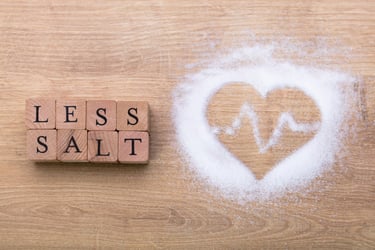eStoreRx™
Online Supplement Dispensary
eStoreRx™ is an easy direct-to-patient ordering & fulfilment program for lifelong wellness.
For over 40 years, Biotics Research Corporation has revolutionized the nutritional supplement industry by utilizing “The Best of Science and Nature”. Combining nature’s principles with scientific ingenuity, our products magnify the nutritional
eStoreRx™ is an easy direct-to-patient ordering & fulfilment program for lifelong wellness.
Biotics Research is proud to expand our commitment to education with the Wellness Unfiltered Pro Podcast. Each episode delves into key health topics and the clinical applications of our premier products. Through candid, insightful conversations, our team offers practical guidance to keep you informed and empowered as a healthcare professional.
December 18 2025
Low-carbohydrate diets are perhaps most popular for weight loss, but the strictest form of carbohydrate restriction – a ketogenic diet – has been show...
 Sodium-to-potassium ratio (Na:K) is shown to be strongly associated with an increased risk of Cardiovascular disease (CVD) and CVD related mortality, more than either Na or K intake alone. Researchers from the NIH Office of Dietary Supplements, Department of Nutrition Science at Purdue University, and the USDA Agricultural Research Service set out to estimate the Na:K in the diet of US adults. Using data from the 2011-2012 NHANES, the National Cancer Institute method was used to estimate Na and K intakes, Na:K, and the percentage of those with Na:K <1.0. What they found was that only 12.2% of US adults had a Na:K <1.0, a ratio that while not necessarily ideal, would certainly be considered preferable to the 1.38 average seen for all adults, and is compatible with the WHO guidelines for reduced risk of mortality. On average, 90% consumed more than the 2300 mg/d recommended daily intake (3600 mg/d average intake) of Na, whereas less than 3% had K intakes above the recommended 4700 mg/d (2800 mg/d average intake). Their report illustrates that only about 10% of US adults have a Na:K consistent with preferred guidelines. In order to improve the risk of CVD related mortality, efforts to reduce sodium intake, with novel strategies to increase potassium intakes are warranted. These dietary modifications offer a cost-effective public health intervention strategy.
Sodium-to-potassium ratio (Na:K) is shown to be strongly associated with an increased risk of Cardiovascular disease (CVD) and CVD related mortality, more than either Na or K intake alone. Researchers from the NIH Office of Dietary Supplements, Department of Nutrition Science at Purdue University, and the USDA Agricultural Research Service set out to estimate the Na:K in the diet of US adults. Using data from the 2011-2012 NHANES, the National Cancer Institute method was used to estimate Na and K intakes, Na:K, and the percentage of those with Na:K <1.0. What they found was that only 12.2% of US adults had a Na:K <1.0, a ratio that while not necessarily ideal, would certainly be considered preferable to the 1.38 average seen for all adults, and is compatible with the WHO guidelines for reduced risk of mortality. On average, 90% consumed more than the 2300 mg/d recommended daily intake (3600 mg/d average intake) of Na, whereas less than 3% had K intakes above the recommended 4700 mg/d (2800 mg/d average intake). Their report illustrates that only about 10% of US adults have a Na:K consistent with preferred guidelines. In order to improve the risk of CVD related mortality, efforts to reduce sodium intake, with novel strategies to increase potassium intakes are warranted. These dietary modifications offer a cost-effective public health intervention strategy.
Bailey RL, et al. Estimating Sodium and Potassium Intakes and Their Ratio in the American Diet: Data from the 2011-2012 NHANES1-4. The Journal of Nutrition Apr 2016; Vol 146, No. 4; 745-750
Submit this form and you'll receive our latest news and updates.
*These statements have not been evaluated by the Food and Drug Administration. This product has not intended to diagnose, treat, cure, or prevent any disease.
Proposition 65 Warning
© 2025 Biotics Research Corporation - All Rights Reserved
Submit your comment